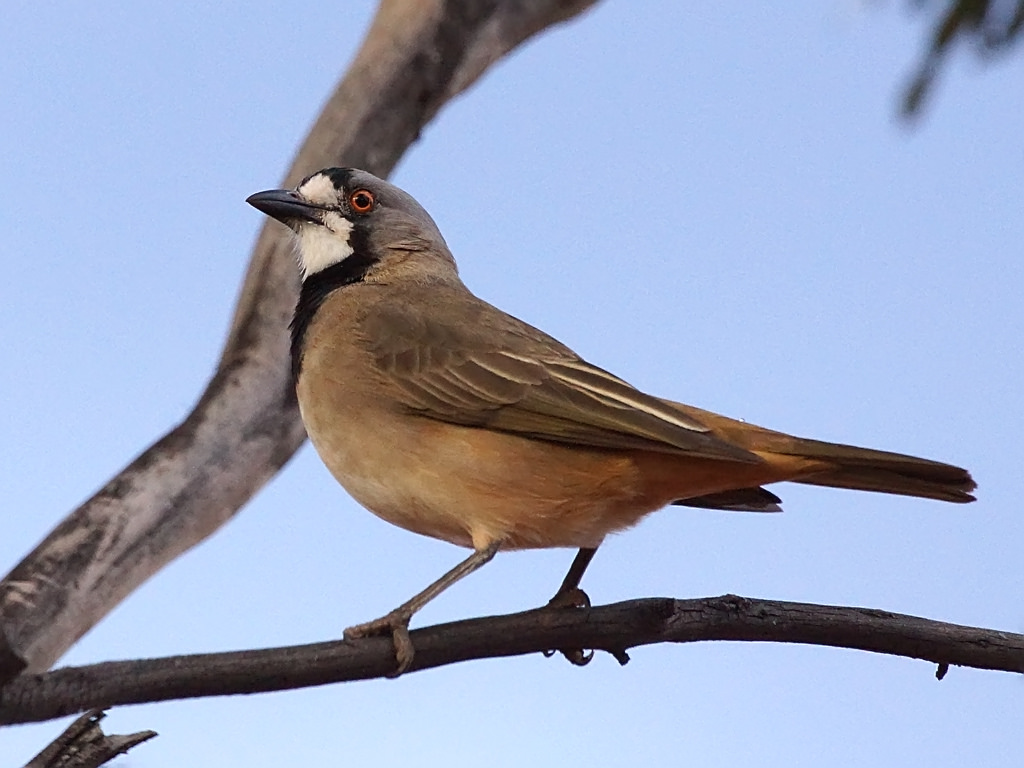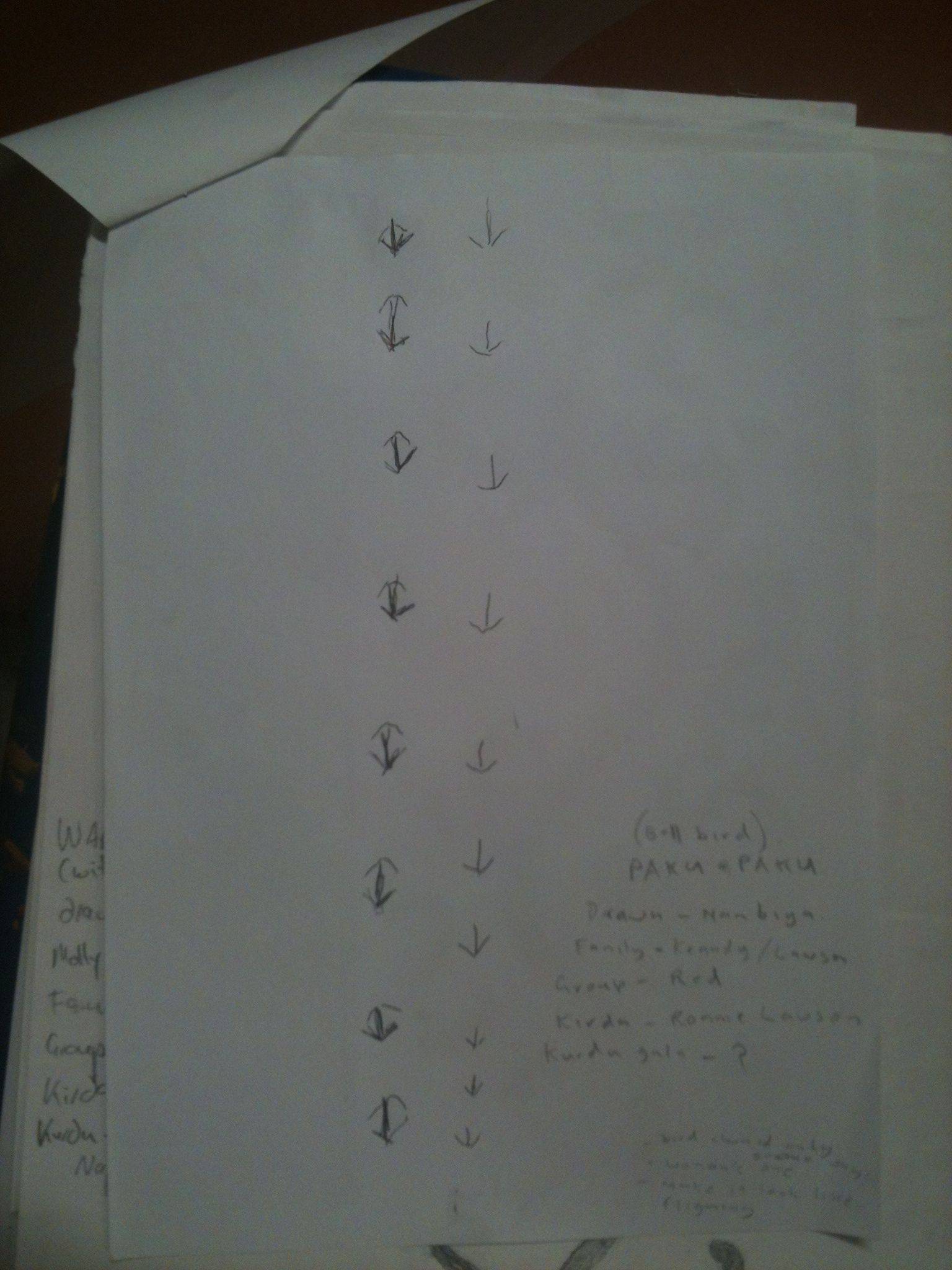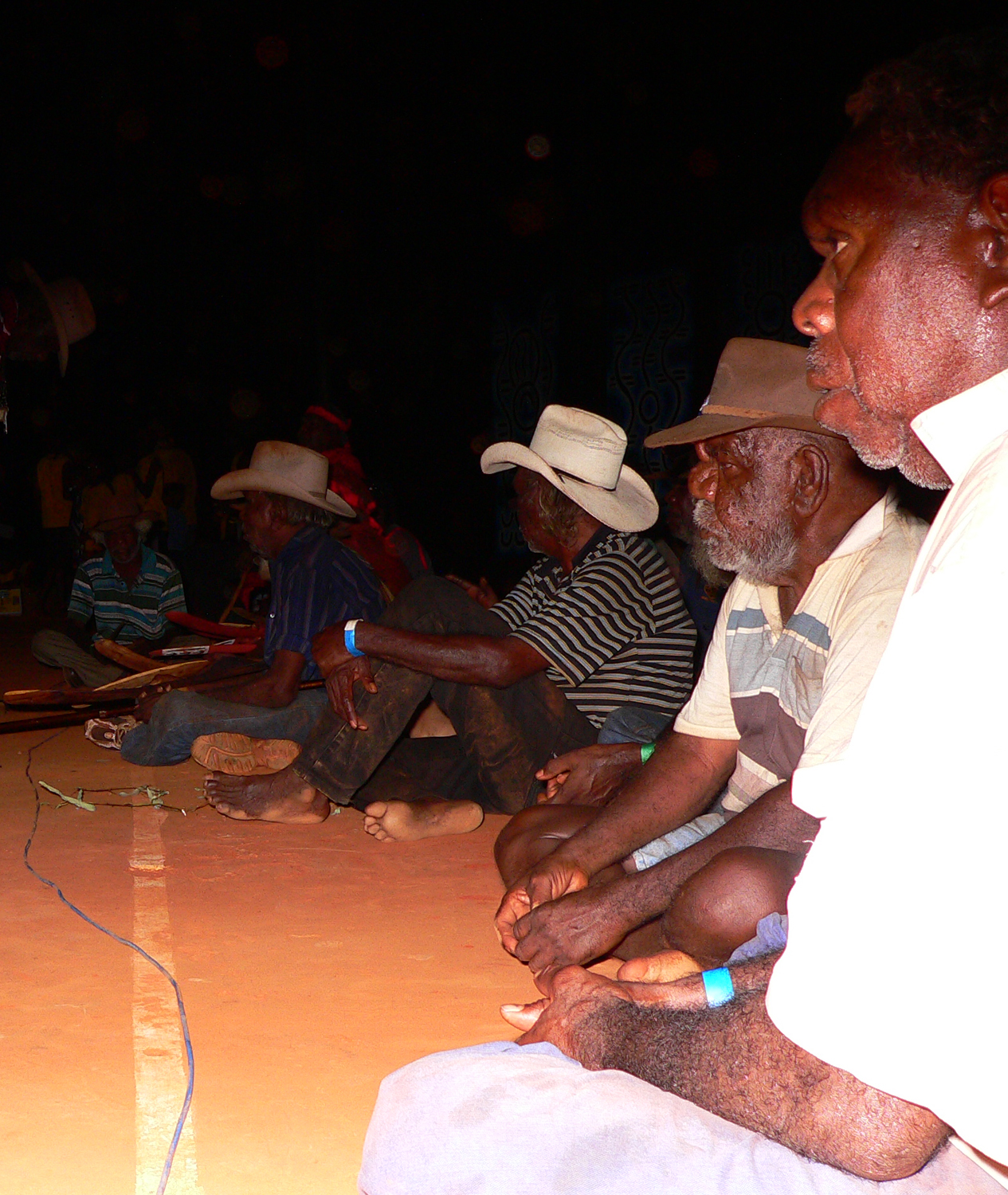Milpirri Banner - PAKU PAKU (Crested Bellbird)
Dreaming
Paku-Paku (Crested Bellbird)
Latin
Oreoica Gutturalis
Paku-Paku (Crested Bellbird) - Photo / Information
Dreaming Story
“Women’s one. The bird took off and came from Kaytetye country and then flew back through Pirlinyanu soakage in Warlpiri country and drank.”
Language map of Indigenous Australia to locate Kayteye country - Map
Learn about Kaytetye people - Story
Belonging to Skin Groups
Jupurrula, Jakamarra, Napurrurla and Nakamarra (Red Group)
Language Stories
Paku-paku ngulaji jurlpu rduku-rduku kuruwarri-kirli, manu walya-walya palkaji jurru julpangku-pardu manu yirdi-kariji jirtankiji paku-pakuju.
Paku paku is a bird that has a design on its chest, its colour of the chest design is walya-walya (colour of earth/ground). His head bounces up and down.
Source: Swartz, Stephen M. 2012. Warlpiri—English Dictionary: with English—Warlpiri finderlist. 2nd edition. AuSIL Dictionary Series, A-3, (Charles E. Grimes, series editor). Darwin: Australian Society for Indigenous Languages. [Accessed via Lexique Pro]
The ventriloquist
One of the most outstanding features of the Crested Bellbird is its rich, musical call. A series of staccato, bell-like notes, followed by a loud ‘plop’, it can be heard in many dry habitats on mainland Australia. Its most surprising aspect is that it is ventriloquial - the bird can throw its voice. It can sound as though it is a few metres off to your left, then it’s fifty metres to your right, and then behind you, which is frustrating if you want to see the bird!
Listen to the call of the Paku-Paku (Crested Bellbird) - Video
See the Paku-Paku (Crested Bellbird) - Video
Warlpiri Law
“The crested bell bird is associated with Kurdijia men, and is therefore feared.
Learn about Warlpiri stories from the reader called Juju-patu-kurlu by Egan Nungarrayi, Jeannie, Ross Napaljarri, Kay, Brown Napanangka, Jean, Ross Napaljarri, Tess, Oldfield Napurrurla, Nancy and Morton Napurrula, Helen (1990). Juju-patu-kurlu. Yuendumu: Bilingual Resource Development Unit - Story
The English translation is: “Paku-paku. When people go hunting, sometimes they hear the crested bellbird (kurtaja bird). It sits on top of the tree, and talks like this, "Kill them! "Kill them!" And another thing it says is, "Creep up on them! Beat them, beat them, beat them." He talks good Warlpiri just like an Aboriginal person. People are frightened of him just as if he was a big monster. But it's just a little bird with a fat stomach. He talks loudly. Then the people call to each other. "Hey! Tell him off. Make him ashamed." So after calling out they tell him off. "Go a long way from here, you horrible, awful thing." So it goes off to another place but you can still hear it talking faintly in the distance, saying the same thing. "Kill them! Creep up on them! Beat them, beat them, beat them, beat them." This is how he always talks. If you go hunting, walk quietly so the crested bell-bird won’t hear you.”
Family
In Lajamanu the Kennedy and Lawson families. Old Ronnie Jakamarra Lawson was a key traditional owner until his passing; his descendants can speak for Paku paku.
Elder Profile
Ronnie Jakamarra Lawson is a Pintupi/Warlpiri artist and respected figure in the Lajamanu community, his work has toured overseas and is illustrated on the cover of the Donald Kahn Collection catalogue. Jakamarra was born at Rilyi-rilyi in 1930 or earlier. Jakamarra was well-known and liked by everyone in Lajamanu for the sweetness of his disposition. His country is Rilyi-rilyi and his Dreamings Karnta (Women), Janmarda (Bush Onion) and Wintiki (Bush Stone Curlew). A Ronnie Lawson painting of Pituri (Bush tobacco) Dreaming features on the cover of an award winning thesis on adult education at Lajamanu by David MacLeay and another of Bush Bean on the cover of the catalogue of the Donald Kahn collection, which toured USA and Europe in1991-2. Ronnie often worked with his wife Louisa Lawson Napaljarri, both highly regarded painters. Ronnie Lawson started painting in 1986 in the Traditional Painting course organised by the TAFE Unit at Lajamanu school. Ronnie Lawson was a Law Man with an extensive knowledge of song and country around Mungkururrpa (Tanami Downs). He was a key informant in the Tanami Downs land claim.
Source: Design and Art Australia Online with additions by Miles Holmes
Read of Ronnie Jakamarra Lawson’s life story in Stories From Lajamanu (NT Department of Eduction, Darwin 1985) - Story
Further Reading
Learn more about the Paku-paku from the writings of Warlpiri ethno-ornithologist Bob Gosford - Information




